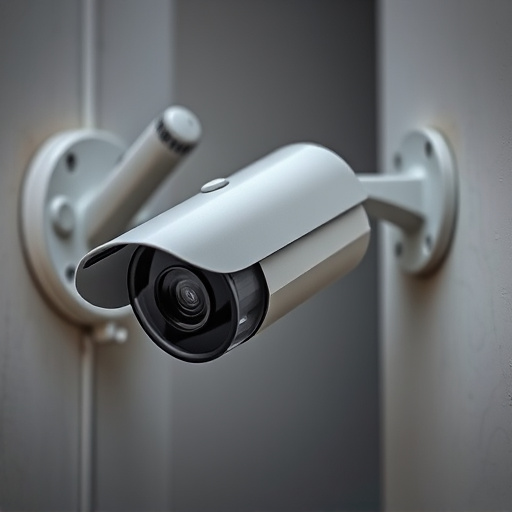Fake security cameras utilize strategic placement at eye level (5-10 feet) or integrated into structures to mimic real surveillance, deterring criminals by obscuring blind spots. Advanced materials and engineering create nearly indistinguishable fakes with realistic angles and details, including motion sensors and LED indicators. However, ethical concerns around privacy, consent, and potential misuse raise questions about responsible deployment and legal frameworks governing fake security camera height placement.
In an era where surveillance is omnipresent, realistic fake security cameras offer a surprising twist. This article explores the art of creating convincing fakes, delving into crucial aspects like placement techniques, height and angle adjustments using advanced materials, and addressing ethical boundaries. By understanding how to strategically position these replicas, you can enhance privacy or create immersive decoys. Discover the key factors that make fake security camera height placement nearly indistinguishable from genuine surveillance equipment.
- Understanding Fake Camera Placement Techniques
- Key Factors for Realistic Height and Angle
- Advanced Materials Crafting Convincing Fakes
- Ethical Considerations in Surveillance Deception
Understanding Fake Camera Placement Techniques
Surveillance equipment, while seemingly static, employs clever techniques for realistic placement, especially in the case of fake security cameras. One critical aspect is fake security camera height placement. Installers strategically position fakes at varying heights to mimic genuine surveillance systems. This often involves mounting them at eye level, on poles or ceilings, or even integrating them into structures like trees or streetlights. The goal is to create an illusion of all-encompassing observation, deterring potential criminals by making it difficult to identify blind spots.
Key Factors for Realistic Height and Angle
Creating a convincing surveillance setup involves careful consideration of height and angle placement, especially when it comes to fake security cameras. Key factors include simulating natural eye-level perspectives and maintaining realistic camera angles. To achieve this, manufacturers often use precise engineering and advanced materials to mimic the appearance of authentic equipment.
The fake camera’s height should align with common installation practices. Typically, security cameras are positioned at eye level or slightly elevated to capture clear footage without distorting human perception. This means placing them around 5-10 feet (1.5-3 meters) above ground level. Angles should also be lifelike, often resembling the field of view of a genuine camera lens, adding to the overall realism and deterrence effect.
Advanced Materials Crafting Convincing Fakes
Advanced materials and manufacturing techniques play a pivotal role in crafting convincing fake surveillance equipment, including fake security cameras. By simulating the intricate details and functionalities of real cameras, manufacturers create fakes that are nearly indistinguishable from the genuine articles. This involves utilizing high-resolution printing technologies to replicate the appearance of lenses, housing, and connectors, as well as incorporating motion sensors and LED indicators to mimic real-time behavior.
One key aspect in achieving realistic fake security camera height placement is the attention to physical dimensions and proportionality. Manufacturers meticulously measure and recreate the size, shape, and mounting mechanisms of various camera models, ensuring that the fakes can be installed just like their functional counterparts. This level of craftsmanship not only enhances the visual realism but also allows for seamless integration into existing security systems without raising suspicion.
Ethical Considerations in Surveillance Deception
The ethical implications of using realistic-looking fake surveillance equipment, especially in terms of fake security camera height placement, are a growing concern for privacy advocates and technology ethicists. While these devices offer enhanced security and peace of mind for property owners, their deceptive nature raises questions about consent, transparency, and potential misuse. The mere presence of fake cameras can create a false sense of security, leading to complacency in actual surveillance measures.
In many jurisdictions, the legal status of such equipment is unclear, with regulations often lagging behind technological advancements. This gray area necessitates open discussions on defining acceptable practices for deploying realistic fakes. Responsible use requires clear guidelines on placement, visibility, and disclosure to ensure that residents are aware of the presence—or absence—of active surveillance systems in their communities.
Realistic-looking fake surveillance equipment, while ethically complex, offers a unique perspective on enhancing physical security. By understanding advanced placement techniques, incorporating precise height and angle adjustments, and leveraging innovative materials, individuals can create convincing fakes. However, it’s crucial to balance these capabilities with ethical considerations to ensure responsible use in the realm of surveillance deception, particularly regarding Fake Security Camera Height Placement.
